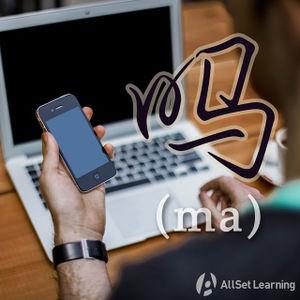Difference between revisions of "Advanced yes-no questions with "ma""
| Line 69: | Line 69: | ||
</div> | </div> | ||
| − | |||
<div class="liju"> | <div class="liju"> | ||
Revision as of 08:22, 5 December 2014
| This article is a stub. Editors can help the Chinese Grammar Wiki by expanding it. |
-
Level
-
Similar to
-
Used for
-
Keywords
The question particle 吗 (ma) is a very simple way to form questions in Chinese. By placing 吗 (ma) on the end of a statement, you convert it into a "yes/no question," (questions that could be answered with yes or no in English.) These are also known as "polar questions."
Structure
You'll remember that this is the simple pattern for yes/no questions:
Statement + 吗 ?
If you embed a question that uses a question word instead of a statement, you can create a more complex kind of 吗 (ma) question:
[Question-word Question] + 吗 ?
Examples of common question words include 什么 (shénme), 谁 (shéi), and 哪里 (nǎli).
Examples
Note that the following examples typically contains some kind of "verb of understanding" such as 知道 (zhīdao),了解 (liǎojié), 明白 (míngbai), 认识 (rènshi), etc. Then "吗" (ma) can still be added at the end of the question, turning it into a kind of confirmation. For example:
- 这 是 什么 东西 ?What is this thing?
- 你 知道 这 是 什么 东西 吗?Do you know what this thing is?
- 他 是 谁 ?Who is he?
- 你 知道 他 是 谁 吗?Do you know who he is?
- 这 是 什么 意思 ?What is the meaning of this?
- 你 明白 这 是 什么 意思 吗?Do you understand the meaning of this?
- 他 的 问题 是 什么 ?What is his question?
- 你 明白 他 的 问题 是 什么 吗?Do you understand what his question is?
- 怎么 学 中文 ?How does one learn Chinese?
- 你 知道 怎么 学 中文 吗?Do you know how to learn Chinese?
- 他 叫 什么 名字 ?What is ihis name?
- 你 知道 他 叫 什么 名字 吗?Do you what his name is?
- 王 老师 在 哪里 ?Where is Teacher Wang?
- 你 知道 王 老师 在 哪里 吗?Do you know where Teacher Wang is?
See also
Sources and further reading
Books
- Chinese: An Essential Grammar, Second Edition (pp. 138-40) →buy
- Integrated Chinese: Level 1, Part 1 (3rd ed) (pp. 29-30) →buy
- New Practical Chinese Reader 1 (新实用汉语课本1) (p. 21) →buy
- New Practical Chinese Reader 1 (新实用汉语课本1)(2nd ed) (pp. 23, 250) →buy



